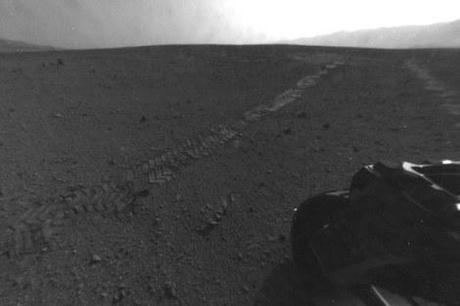NASA officials may be saying this over and over these days; “Please don’t find water.”
When searching for life on another world, the most fundamental precaution that any space agency needs to take with any probe or rover is to ensure it doesn’t carry Earth microbes. However, if reports are to be believed, Nasa may have screwed up — and is hoping that it doesn’t find any water when it drills into the Martian soil.
According to the Los Angeles Times, six months before the rover’s launch in November 2011, a possible contamination occurred. A Nasa engineer worried that a rough landing might make assembling Curiosity’s drill on Mars impossible (and thus rendering one of the rover’s most important tools impotent) and opened one of the units – which were designed to be stored in a sealed box, separate from the drill mechanism - to install one drill bit as a kind of backup. Under the agency’s procedures, the box should not have been opened without knowledge of a NASA scientist who is responsible for guarding Mars against contamination from Earth. But Planetary Protection Officer Catharine Conley wasn’t consulted.
“They shouldn’t have done it without telling me,” she said. “It is not responsible for us not to follow our own rules.”
So, yeah, the rover’s drill bits may be tainted with Earth microbes that could survive upon touching water.
Worried scientists at Nasa now estimate that there may be as many as 250,000 bacterial spores that could have survived both the journey to Mars and the landing. If Curiosity drills into the ground and strikes water, the Nasa team will have to assess the risk of continuing knowing that they could have permanently seeded life onto Mars. That might even mean never knowing for sure whether life was ever indigenous to the Red Planet.
Fantastic, hm?
The Gale Crater (which Curiosity is currently trundling across) was chosen for its extreme dryness, and the engineers apparently opened the sealed box as part of a “calculated risk” — the worry being that a useless drill arm was a far bigger likelihood than finding water in Gale that could be contaminated.
Even if Curiosity has been contaminated, it might seem strange to think that anything alive could survive the solar radiation-suffused vacuum of space — except many things have managed to survive both space and Mars-like conditions. Famously, tardigrades (or “water bears”) have been able to survive up to ten days unprotected exposure to space, while lichen has survived in space for over a year and half in an experiment that leant some credence to the panspermia hypothesis. There are also several groups around the world investigating bacteria which could theoretically survive on Mars and, if necessary, help terraform the planet to make it habitable for humans.
Considering Curiosity’s mission is scheduled to last for two years, Nasa scientists will be hoping they don’t come across any Martian puddles — it would be a huge shame to have to carry around a useless drill for two years, knowing how much effort it took to get it to another world, and knowing what it could potentially teach us.
Conley’s predecessor at NASA, John D. Rummel, a professor of biology at East Carolina University, said, partly in jest: “It will be a sad day for NASA if they do detect ice or water. That’s because the Curiosity project will most likely be told, ‘Gee, that’s nice. Now turn around.’ “
If water is found, Curiosity could still conduct tests from a distance with instruments including a laser and spectrometers.
N.

Via: L.A. Times & Wired

